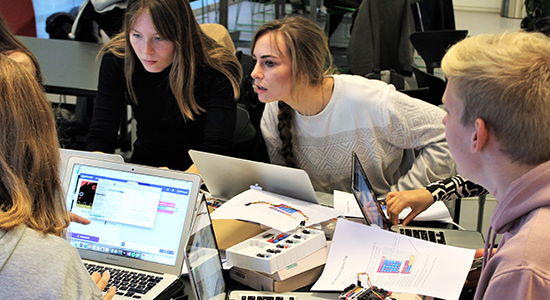
Digital humanities
3 Grades of Digital Involvement
A somewhat crude but quite practical description of Digital Humanities could be ‘where the humanities meet digitization and digital phenomena – and conversely’. The addition ‘conversely’ is meant to stress the fact the two realms meet not only when humanities use digital tools or study digital phenomena. It is equally important to realise that endeavours and problems intrinsic to digitization call for concepts, methods and knowledge rooted in the humanities. Tentatively, the field of Digital Humanities may then be described through three major ‘ways of meeting’.
Digital representation of non-digital objects
Digital Humanities (or its forerunner ‘Humanities Computing’) was centred on the digital representation of classical objects of study such as text, pictures, archaeological objects and the development of corresponding tools to operate on the representations. This aspect of Digital Humanities is still fully present and relevant, e.g. in the endeavours within digitization of cultural heritage, the study of all sorts of non-digital source materials - cultural artifacts, archival materials, archaeological remains as well as linguistic materials.
Digitally born materials
Digitization in general has brought forth new and highly important objects of study – ‘digitally born’ material such as websites, social media, networked knowledge systems including realtime systems, new forms of communication, as well as new and ground-breaking patterns within scholarly communication, and many other items.
Humanities and the development of IT
Humanities themselves incorporate theories and methods that are directly relevant not only to the description and understanding of information systems and software in general, but indeed to the construction and development of IT and digital media. Classical conceptual analyses are reflected directly in the framework of object-oriented programming, rhetorical architecture is needed for the development of persuasive technology, knowledge about communication and aesthetics is indispensable for successful interfaces.
Moreover, the successful implementation and use of IT and digital media also calls for a broad understanding of human communication, interpretation practices and interaction. In the wake of these issues, new fields of study emerge as for instance knowledge visualization based on the integration of aesthetic and cognitive perspectives. These descriptions are not meant as Aristotelian definitions. As with many other conceptualizations, they represent continua and sometimes criss-crossing phenomena rather than set-theoretic absolutes.
Nevertheless, there are genuine differences between digital methods as essentially doing the same things as before but in much more efficient ways, and an involvement with digitization which transcends disciplinary boundaries and transforms theories and methodologies. Boldly, one might then speak of three grades of digital involvement, where the above descriptions indicate ever more comprehensive degrees of involvement with digitization. A higher degree of involvement by no means indicate a better way of involvement, but it does call for ever more acute deliberations on the repercussions on theory and method within the discipline in question.
Per Frederik Vilhelm Hasle,
Professor, Department of Information Studies
